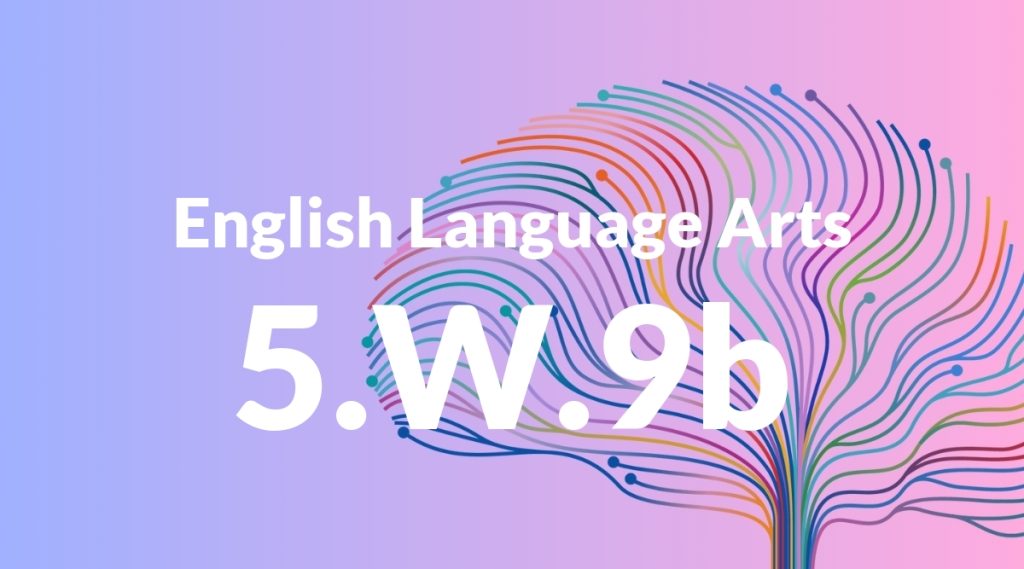Standard: 5.W.9b – Apply grade 5 Reading standards to informational texts (e.g., “Explain how an author uses reasons and evidence to support particular points in a text, identifying which reasons and evidence support which point[s]”).
Grade level: Grade 5
Subject: English Language Arts
Domain: Writing
Teacher Overview
This standard focuses on helping students apply their reading comprehension skills to informational texts. It is important because it builds critical thinking skills, enabling students to analyze and evaluate the information they encounter in various texts. Students should be comfortable identifying main ideas and supporting details in simpler texts. They should also understand the basic structure of informational texts and have some experience with reading comprehension strategies.
Mastering this standard will enable students to critically evaluate sources and construct well-supported arguments, skills that are essential for success in higher education and various professional fields.
Common Misconception 1
Some students may think that all pieces of evidence in a text are equally important. This is incorrect because not all evidence is of the same quality or relevance. Strong evidence directly supports the main point, while weaker evidence may be less relevant or persuasive.
Intervention 1
Use examples of texts with varying quality of evidence. Have students rank the evidence from strongest to weakest and discuss why some pieces are more convincing than others.
Common Misconception 2
Another common misconception is that an author’s opinion carries the same weight as factual evidence. This is incorrect because opinions are subjective and may not be based on verifiable facts.
Intervention 2
Provide texts that clearly distinguish between opinions and factual evidence. Discuss with students how to identify each and the role they play in supporting an argument.
Prerequisite Knowledge
Students should have a basic understanding of how to identify the main idea and supporting details in a text. They should also be familiar with different types of informational texts and basic reading comprehension strategies.
Subsequent Knowledge
After mastering this standard, students will be able to critically evaluate sources, construct well-supported arguments in their own writing, and develop advanced analytical skills that will be useful in higher grades and various academic disciplines.
Instructional Activities
- Group discussions analyzing the evidence in different informational texts
- Writing assignments where students must identify and evaluate evidence in a given text
- Interactive activities like debates or presentations where students must use evidence to support their points
- Creating graphic organizers to map out the evidence and main points in a text
- Peer review sessions where students critique each other’s identification and use of evidence




